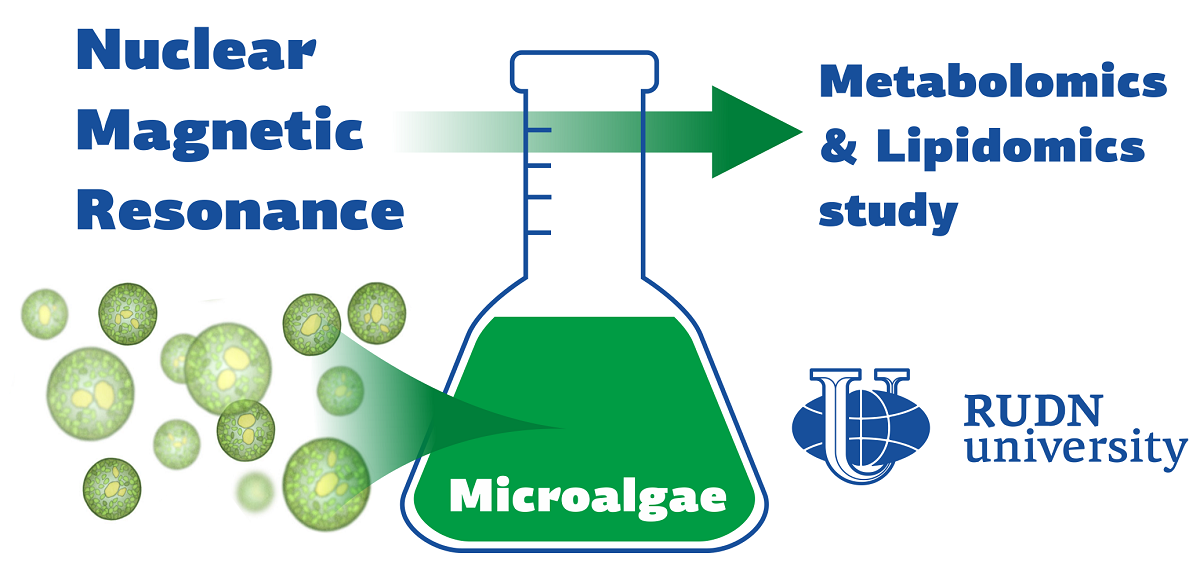Chemists Reveal Potential of NMR Spectroscopy for Microalgae Study

Microalgae are used as sources of bioactive substances—they produce secondary metabolites. These substances are useful in different areas, from cosmetology to the chemical industry and energetics. To determine the composition and number of metabolites, they use the phenomenon of nuclear magnetic resonance (NMR), that is producing of electromagnetic signal when the magnetic moment of the nucleus changes. RUDN University chemists, together with colleagues from India, collected research on the use of NMR spectroscopy for the analysis of microalgae and outlined the most effective protocols and promising areas.
“Microalgal biotechnology has emerged that allows the continuous development of microalgae on a commercial scale due to its enormous biodiversity of bioactive components in various applications. Recent progress also unlocked microalgae potentials to uncover a range of novel metabolic capabilities such as fix atmospheric carbon dioxide, valorize waste resources, and turn them into bio-products such as health, cosmetics and natural products for the development towards sustainable bio-refinery. NMR has been one of the top three analytical methods in metabolomics and lipidomics.,” said Vinod Kumar, RUDN University professor.
Chemists analyzed more than 50 papers on this topic. Among the advantages of nuclear magnetic resonance chemists named, for example, the ability to conduct several experiments with a single sample, since NMR does not destroy it. Moreover, NMR requires minimal sample preparation and can detect even previously unknown compounds. However, this method has its drawbacks. NMR is less likely to detect compounds with high molecular weight (such as long chains of fats). In addition, in the graphical representation, the peaks corresponding to different compounds can overlap each other. This makes analysis difficult.
RUDN University chemists concluded that the only way to increase the efficiency of metabolic analysis (to identify as many metabolites as possible) is to use a combination of mass spectroscopy and NMR. Nuclear magnetic resonance helps finding unknown compounds, which can then be accurately searched for in other samples using mass spectroscopy.
“The results obtained by quantitative mass spectroscopy methods are often complementary to those obtained by NMR, with MS methods being better at detecting hydrophobic molecules and NMR being better at detecting hydrophilic molecules of microalgae,” said Vinod Kumar, RUDN University professor.
The study is published in the Archives of Biochemistry and Biophysics. https://www.sciencedirect.com/science/article/abs/pii/S0003986121002368
The project to develop a cellular model of the placenta became the winner in the Scientific Materials category of the Young Scientists 3.0 competition, organized with the support of the Presidential Grants Foundation and T-Bank.
Ten scientific journals published by RUDN University have been included in the highest level of the state list of scientific publications, the White List.
Forests are not only the lungs of the planet, but also home to millions of species. However, it has remained unclear how underground interactions between trees and fungi affect forest species richness in different climatic conditions. Previous studies have yielded conflicting results: in some regions, the dominance of certain fungi reduced tree diversity, while in others it increased it.
The project to develop a cellular model of the placenta became the winner in the Scientific Materials category of the Young Scientists 3.0 competition, organized with the support of the Presidential Grants Foundation and T-Bank.
Ten scientific journals published by RUDN University have been included in the highest level of the state list of scientific publications, the White List.
Forests are not only the lungs of the planet, but also home to millions of species. However, it has remained unclear how underground interactions between trees and fungi affect forest species richness in different climatic conditions. Previous studies have yielded conflicting results: in some regions, the dominance of certain fungi reduced tree diversity, while in others it increased it.